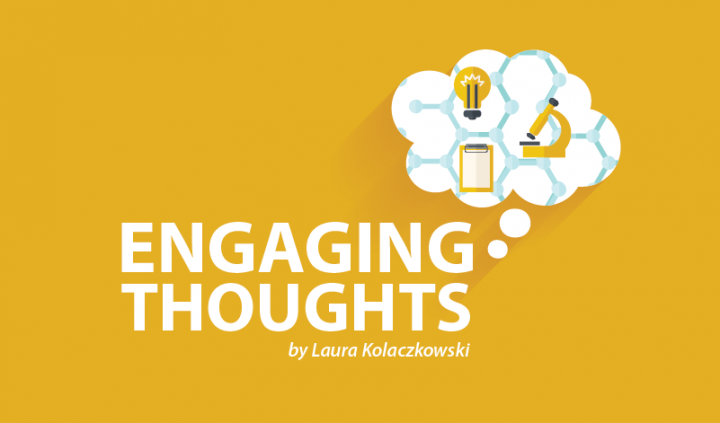Circumvention Tourism, Revisited
Written by |


In a previous column, I wrote about circumvention tourism, in which patients travel to another country to access a medical treatment that is unavailable in their home country. I wrote it in response to someone in the MS community who promoted travel to an offshore island clinic for a stem cell therapy for MS. A discount was offered for mentioning this person’s name. The promotion of a trip to the islands for an MS “cure” got me looking into the business of traveling abroad for stem cell treatment.
The column provoked a lot of conversation and some criticism. Now that time has passed, I’ve gone back and read the comments again and want to respond.
Content control
First, like others who write personal columns for Multiple Sclerosis News Today, I have MS. We all write what we want to, have our own choice of topics, and are independent of the business model you see on its pages. I have no control over what ads might appear in the middle of my columns, nor do any of the fine people who write columns here. I also don’t always write the headlines that appear in my columns.
Negative comments are too common these days in any online forum. Even here, where we should be having productive conversations, it isn’t unusual to be hit with harsh words. Those writing such comments might feel better getting their vitriol into the conversation, but I try to ignore them.
When I first began writing publicly, these types of responses would bother me, but I quickly learned that some people are just going to disagree, regardless of what I have to say. And yes, even when the reader strongly disagrees, the people behind MS News Today allow the comments to be posted for everyone to read. Unlike Facebook, where it’s easy to block a person who has opposing ideas or controversial questions, most comments are not blocked here.
Reader response
Still, I am thrilled with the responses my column generated. Almost all of the commenters obviously put great thought into what they wrote and presented their own position for or against this type of travel and stem cell therapy in a way that allows us to engage in sharing ideas. This is exactly what controversial topics should do — engage people to talk about their own experiences and thoughts.
A few people noted the evenhanded approach I took when writing on this topic, and I appreciate that mention. I did my best to present the facts. Some people correctly pointed out that there are different types of stem cell procedures, and for lack of space, I didn’t get into those then or here. (You can find information on stem cell treatments here.)
My thoughts
Since my diagnosis, I have said that I believe stem cells will unlock a cure for MS. The politics of the United States did a great disservice by linking stem cell therapy to embryonic research, then blocking its study for way too many decades. I also believe in science — there is a way to prove whether these treatments work, and we are fortunate that clinics in Canada, the U.S., and Mexico are working to that end to provide us with scientific proof.
What else do I believe? There will always be unscrupulous people trying to make money off people who are desperate to improve their health. They used to be called snake oil salesmen in the Wild West. I have expletive-filled names for them now that can’t be published. Sadly, the MS community is an easy target because living with a chronic disease that has a bleak future is difficult and often filled with desperation.
Controversial for some
Now here’s the part where I will likely receive more disagreement: I don’t believe the pharmaceutical companies would rather keep us ill and protect their profits than invest in a cure. I don’t believe the drugs we take for MS are poison. I don’t believe the FDA is part of a conspiracy to protect Big Pharma. Just because we don’t hear much about the research taking place in labs around the world doesn’t mean a cure isn’t being actively sought. I place too much hope in MS treatment to waste energy believing the pharma industry is evil.
As most of the readers understood, the point of my earlier column is this: All who are tempted to engage in circumvention tourism should do their own research, gather the facts, make their own decision based on good science, and not be fooled into parting with their money for a sham treatment just because we are desperate for a cure.
***
Note: Multiple Sclerosis News Today is strictly a news and information website about the disease. It does not provide medical advice, diagnosis, or treatment. This content is not intended to be a substitute for professional medical advice, diagnosis, or treatment. Always seek the advice of your physician or other qualified health provider with any questions you may have regarding a medical condition. Never disregard professional medical advice or delay in seeking it because of something you have read on this website. The opinions expressed in this column are not those of Multiple Sclerosis News Today or its parent company, Bionews Services, and are intended to spark discussion about issues pertaining to multiple sclerosis.






Jason
Who owns this site?
Christopher T.
Laura,
Thank you for writing again and clarifying your thoughts from your previous post. It's quite helpful, but it also shows grace and courage. I believe you are right that each person should do his or her own research and decide for himself or herself what course to take. I also agree there are much less diabolical and nefarious transgressions in the biopharma world than many may believe, including conspiratorially. It just doesn't make sense to ultimately harm people in need of help, though unfortunately some of that does actually happen. And lastly, even though the U.S. was late to the start, we are making great strides in research and knowledge of regenerative science. As well there is a fairly decent amount of information sharing and common knowledge. So it isn't like other countries have secret information to cures not available elsewhere. The basic truth is that the science is fairly new, and the biological domain of stem cells is extraordinarily complex. So much so that almost anything can happen, but it's nearly 0% reproducible. So... do some people experience some amount of recovery from stem cell therapies? Maybe. It's probably possible right now, but statistically improbable. I've worked in a university stem cell research lab, and talked with renowned knowledgeable scientists. And unfortunately we're still many years away from safe--and more importantly, effective--stem cell therapies... anywhere. The government here isn't holding anyone back from effective cures. If anyone were to contact the FDA, they would explain as much. It's about safety, and they would caution anyone to be very careful about medical tourism and how risky it is. But they wouldn't tell anyone they can't do it. Facts are that medical tourism for stem cell transplants is risky, because there are no guarantees. And not enough established clinical science that any of the therapies are effective--it's all anecdotal right now.
But thank you again for both your posts.
Jason
How much has, for example Gilenya, increased over the last 5 years?
Valencia
63,000 for Gilenya in 2013. 98,000 for Gilenya now.
Jason
Again, I post 63,000 for Gileniya in 2013 and 98,000 grand now. The pharmaceutical companies have us folks. Go and get HSCT. Do not wait. There are several places around the world; just a few in US and they are "testing" it.
Doug
Jason have you had HSCT? Been researching it the past couple months. Mexico and Russia appear to be safe and reputable. Would help to have more data on success rates for PPMS.
I’m currently on Ocrevus at 32k every 6 months.
Jason
I don't have any success rates. I would reach out to Mexico (Clinica Ruiz) or to Russia (A.A. Maximov) for what you are looking for. I did mine at Clinica Ruiz. Forget paying the exorbitant fees. Good luck.
Doug
Thanks Jason. I will. Clinica Ruiz would make the most sense. I’m in California.
Jason
My best to you.
Jason
"I don’t believe the pharmaceutical companies would rather keep us ill and protect their profits than invest in a cure." You wrote this, then how did, for example, Gilenya go from 63,000 in 2013 to 98,000 now?